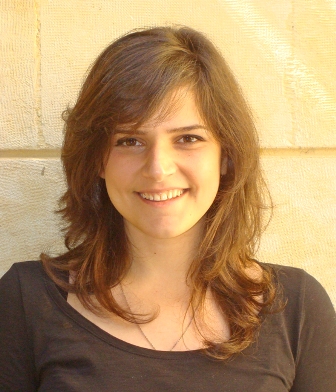
To write about safe abortion, I picture what the best-case scenario is for someone seeking a safe abortion in Lebanon. Usually that means that a woman gets adequate medical care, not the best, just good enough. She may need to beg a physician to prescribe the medication Misoprostol, help her get a manual vacuum aspiration, or take repeat dosages of Misoprostol. The word safe almost gets equated with basic access and no complications, not more than that. Safe abortion does not mean women are free from feeling guilty, free from being shamed, free from being told they will suffer the emotional and/or psychological consequences of their actions. Safe abortion is not about post-abortion care, or family, friends, or significant others’ support (though these are important too). It boils down to getting it done.
Abdominal pain, nausea, diarrhea at taking Misoprostol repeatedly till it works, is part of the process for many women faced with unwanted pregnancies; a price that at many times isn’t too steep. Sadly, even some range of complication is seen as okay, as long the pregnancy is terminated; it’s done and all that she needs to follow up on is getting medications to induce uterine contractions and end an incomplete abortion. Incomplete abortions become a sigh of relief, an ‘almost there’. Sighting of blood is relief, doesn’t matter if it’s all not done, just the beginning, something to work with is good enough. It’s sad really because that’s not a safe abortion. That’s not how a safe abortion should be thought of; we need to up the bar on our conceptualization.
These aren’t the words I utter to women seeking abortions, but are part of my thought process. What is a safe abortion in Lebanon? Having one, hiding the fact, and recollecting it as a distant memory and cautionary tale to oneself. That’s the best case scenario, a safe abortion for someone who is Lebanese, urban living, middle-class, with decent medical access, and with formal education. The picture of a safe abortion for migrant women, for refugees, for women living in rural parts of Lebanon is painted with much gloomier colors. It’s funny how we’ve grown accustomed to the combination of the words safe and unsafe when talking about abortions. I’ve never heard of procedures such as renal dialysis, dental cavity cleaning, tumor re-sectioning, heart surgery or any others being described as unsafe. As in, even having unsafe abortion is implied as a viable option. Even if you type in a combination of searches with the words unsafe, health, and services into Google, the first page will always give unsafe abortion, even if you’re not searching for abortion. Those are the two options on the abortion menu; you can have a safe one or an unsafe one. Women’s bodies, health, uteruses come with both options, a testament to how medicine, the law, and society treat our bodies.
With the many other splendid leftover laws from French colonialism, Lebanese penal code articles 539-546 [1] state that abortion is illegal under all circumstances, except when it would preserve a woman’s life, if in danger, as amended in October 1969.
The law, governed by eight articles [2], prohibits the dissemination of information on abortion or methods used to facilitate it, the ownership for the purpose of selling or selling of objects that are designed to perform it, and additionally punish any woman who induces abortion and any other person who aids her to do so. Even with the woman’s consent, under the law, the person who performs an abortion is subjected to one to three years of imprisonment and the woman herself is subjected to six months to three years imprisonment. Up until two weeks ago, these laws didn’t really bother me. I assumed, like many other laws in Lebanon, they are enforced arbitrarily without punitive surveillance. A representative speaker of the president of the syndicate of physicians gave an opening speech at Gefinor Rotana Hotel in Beirut for the launching of a network of Arab scholars on sexuality and sexual health and started with saying that over the last month or so, four physicians had their licenses revoked because of performing abortions for reasons that were to save women’s lives (the only legal condition for abortion in Lebanon). Needless to say, jaws dropped and eyebrows rose in the audience, partly because this man was so utterly clueless to the fact that this piece of information is no accomplishment to brag about, but mostly because it is so obvious that it had never crossed his mind even as to why these laws exist and under what conditions women seek abortions. What was even worse is that no one in the audience had heard anything about this, no one wrote about it, no one shared anything on social media platforms, there was no slacktivist or activist outcry; it was done in absolute silence.
Regardless of the stringent laws around abortion in Lebanon, I have always steered away from actively lobbying for changes to abortion laws, and that is because keeping the issue out of the spotlight offers women some degree of access without persecution where surveillance and enforcement of these unfortunately bequeathed laws is low. This is not at all the access we wish for; it’s overpriced, under the table, exploitative, and leaves plenty of room for non-accountability in cases of complications. Observing the horrors of the clashes between pro-choice and anti-choice groups in the West, I wish to avoid reaching that same deadlock and avoid having to go up against the multi-million dollar religiously backed organizations. It encourages me not to engage in lobbying to change the law, but rather to trust that we find creative methods set in sisterhood solidarity and grassroots organizing, of supporting women who seek out abortions.